


2016 New 500 (facelift 2015)
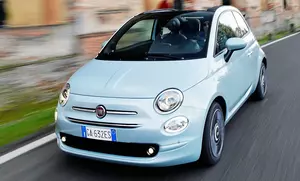
2016 New 500 C (facelift 2015)

2019 500X Urban (facelift 2019)
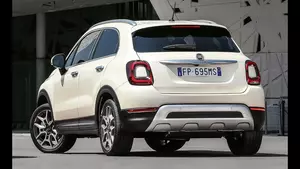
2019 500X Cross/City Cross (facelift 2019)

2014 500X Cross/Off-Road
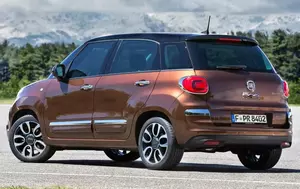
2018 500L (facelift 2017)

2018 500L Trekking/Cross (facelift 2017)

2018 500L Living/Wagon (facelift 2017)
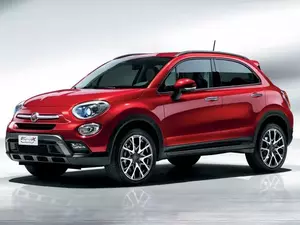
2014 500X

2013 500L Living/Wagon

2013 500L Trekking/Cross
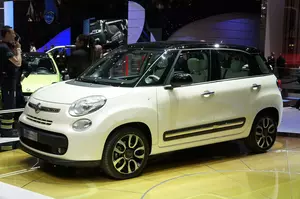
2012 500L
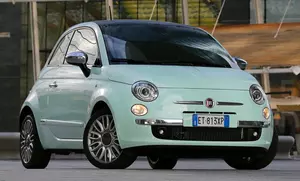
2009 New 500 C
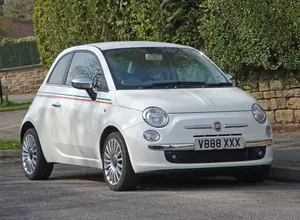
2007 New 500

| Vehicle | Precise engine size | Difference from world average | Engine size to consumption ratio | Horsepower from 1 L | Engine size to 100 kg of weight |
|---|---|---|---|---|---|
| 1.2 |
1.24 L (1242 cc) |
47.1% smaller | - | 56 hp from 1 L | 124 cc to 100 kg |
| 1.2 S&S |
1.24 L (1242 cc) |
47.1% smaller | 24 cc to 1 mpg | 56 hp from 1 L | 138 cc to 100 kg |
| 0.9 TwinAir |
0.88 L (875 cc) |
62.7% smaller | 14 cc to 1 mpg | 97 hp from 1 L | 97 cc to 100 kg |
| 1.3 MultiJet |
1.25 L (1248 cc) |
46.8% smaller | 22 cc to 1 mpg | 76 hp from 1 L | 125 cc to 100 kg |
| 1.4 MultiAir |
1.37 L (1368 cc) |
41.7% smaller | 46 cc to 1 mpg | 99 hp from 1 L | 124 cc to 100 kg |
| Vehicle | 1.2 |
|---|---|
| Precise engine size | 1.24 L (1242 cc) |
| Difference from world average | 47.1 smaller |
| Engine size to consumption ratio | - |
| Horsepower from 1 L | 56 hp from 1 L |
| Engine size to 100 kg of weight | 124 cc to 100 kg |
| Vehicle | 1.2 S&S |
| Precise engine size | 1.24 L (1242 cc) |
| Difference from world average | 47.1 smaller |
| Engine size to consumption ratio | 24 cc to 1 mpg |
| Horsepower from 1 L | 56 hp from 1 L |
| Engine size to 100 kg of weight | 138 cc to 100 kg |
| Vehicle | 0.9 TwinAir |
| Precise engine size | 0.88 L (875 cc) |
| Difference from world average | 62.7 smaller |
| Engine size to consumption ratio | 14 cc to 1 mpg |
| Horsepower from 1 L | 97 hp from 1 L |
| Engine size to 100 kg of weight | 97 cc to 100 kg |
| Vehicle | 1.3 MultiJet |
| Precise engine size | 1.25 L (1248 cc) |
| Difference from world average | 46.8 smaller |
| Engine size to consumption ratio | 22 cc to 1 mpg |
| Horsepower from 1 L | 76 hp from 1 L |
| Engine size to 100 kg of weight | 125 cc to 100 kg |
| Vehicle | 1.4 MultiAir |
| Precise engine size | 1.37 L (1368 cc) |
| Difference from world average | 41.7 smaller |
| Engine size to consumption ratio | 46 cc to 1 mpg |
| Horsepower from 1 L | 99 hp from 1 L |
| Engine size to 100 kg of weight | 124 cc to 100 kg |

| Vehicle | Precise engine size | Difference from world average | Engine size to consumption ratio | Horsepower from 1 L | Engine size to 100 kg of weight |
|---|---|---|---|---|---|
| 1.2 |
1.24 L (1242 cc) |
47.1% smaller | - | 56 hp from 1 L | 124 cc to 100 kg |
| 0.9 TwinAir |
0.88 L (875 cc) |
62.7% smaller | 16 cc to 1 mpg | 119 hp from 1 L | 88 cc to 100 kg |
| 1.2 S&S |
1.24 L (1242 cc) |
47.1% smaller | 25 cc to 1 mpg | 56 hp from 1 L | 138 cc to 100 kg |
| 1.3 MultiJet |
1.25 L (1248 cc) |
46.8% smaller | 22 cc to 1 mpg | 76 hp from 1 L | 125 cc to 100 kg |
| Vehicle | 1.2 |
|---|---|
| Precise engine size | 1.24 L (1242 cc) |
| Difference from world average | 47.1 smaller |
| Engine size to consumption ratio | - |
| Horsepower from 1 L | 56 hp from 1 L |
| Engine size to 100 kg of weight | 124 cc to 100 kg |
| Vehicle | 0.9 TwinAir |
| Precise engine size | 0.88 L (875 cc) |
| Difference from world average | 62.7 smaller |
| Engine size to consumption ratio | 16 cc to 1 mpg |
| Horsepower from 1 L | 119 hp from 1 L |
| Engine size to 100 kg of weight | 88 cc to 100 kg |
| Vehicle | 1.2 S&S |
| Precise engine size | 1.24 L (1242 cc) |
| Difference from world average | 47.1 smaller |
| Engine size to consumption ratio | 25 cc to 1 mpg |
| Horsepower from 1 L | 56 hp from 1 L |
| Engine size to 100 kg of weight | 138 cc to 100 kg |
| Vehicle | 1.3 MultiJet |
| Precise engine size | 1.25 L (1248 cc) |
| Difference from world average | 46.8 smaller |
| Engine size to consumption ratio | 22 cc to 1 mpg |
| Horsepower from 1 L | 76 hp from 1 L |
| Engine size to 100 kg of weight | 125 cc to 100 kg |

| Vehicle | Precise engine size | Difference from world average | Engine size to consumption ratio | Horsepower from 1 L | Engine size to 100 kg of weight |
|---|---|---|---|---|---|
| 1.0 FireFly Turbo |
1 L (999 cc) |
57.4% smaller | 24 cc to 1 mpg | 120 hp from 1 L | 77 cc to 100 kg |
| 1.6 e TorQ |
1.6 L (1598 cc) |
31.9% smaller | 46 cc to 1 mpg | 69 hp from 1 L | 123 cc to 100 kg |
| 1.3 FireFly Turbo |
1.33 L (1332 cc) |
43.2% smaller | 34 cc to 1 mpg | 113 hp from 1 L | 102 cc to 100 kg |
| 1.6 MultiJet II |
1.6 L (1598 cc) |
31.9% smaller | 32 cc to 1 mpg | 75 hp from 1 L | 123 cc to 100 kg |
| 1.3 MultiJet II |
1.25 L (1248 cc) |
46.8% smaller | 22 cc to 1 mpg | 76 hp from 1 L | 96 cc to 100 kg |
| 2.0 MultiJet II |
1.96 L (1956 cc) |
16.6% smaller | - | 77 hp from 1 L | 130 cc to 100 kg |
| 1.3 Turbo |
1.33 L (1332 cc) |
43.2% smaller | 51 cc to 1 mpg | 133 hp from 1 L | 89 cc to 100 kg |
| Vehicle | 1.0 FireFly Turbo |
|---|---|
| Precise engine size | 1 L (999 cc) |
| Difference from world average | 57.4 smaller |
| Engine size to consumption ratio | 24 cc to 1 mpg |
| Horsepower from 1 L | 120 hp from 1 L |
| Engine size to 100 kg of weight | 77 cc to 100 kg |
| Vehicle | 1.6 e TorQ |
| Precise engine size | 1.6 L (1598 cc) |
| Difference from world average | 31.9 smaller |
| Engine size to consumption ratio | 46 cc to 1 mpg |
| Horsepower from 1 L | 69 hp from 1 L |
| Engine size to 100 kg of weight | 123 cc to 100 kg |
| Vehicle | 1.3 FireFly Turbo |
| Precise engine size | 1.33 L (1332 cc) |
| Difference from world average | 43.2 smaller |
| Engine size to consumption ratio | 34 cc to 1 mpg |
| Horsepower from 1 L | 113 hp from 1 L |
| Engine size to 100 kg of weight | 102 cc to 100 kg |
| Vehicle | 1.6 MultiJet II |
| Precise engine size | 1.6 L (1598 cc) |
| Difference from world average | 31.9 smaller |
| Engine size to consumption ratio | 32 cc to 1 mpg |
| Horsepower from 1 L | 75 hp from 1 L |
| Engine size to 100 kg of weight | 123 cc to 100 kg |
| Vehicle | 1.3 MultiJet II |
| Precise engine size | 1.25 L (1248 cc) |
| Difference from world average | 46.8 smaller |
| Engine size to consumption ratio | 22 cc to 1 mpg |
| Horsepower from 1 L | 76 hp from 1 L |
| Engine size to 100 kg of weight | 96 cc to 100 kg |
| Vehicle | 2.0 MultiJet II |
| Precise engine size | 1.96 L (1956 cc) |
| Difference from world average | 16.6 smaller |
| Engine size to consumption ratio | - |
| Horsepower from 1 L | 77 hp from 1 L |
| Engine size to 100 kg of weight | 130 cc to 100 kg |
| Vehicle | 1.3 Turbo |
| Precise engine size | 1.33 L (1332 cc) |
| Difference from world average | 43.2 smaller |
| Engine size to consumption ratio | 51 cc to 1 mpg |
| Horsepower from 1 L | 133 hp from 1 L |
| Engine size to 100 kg of weight | 89 cc to 100 kg |

| Vehicle | Precise engine size | Difference from world average | Engine size to consumption ratio | Horsepower from 1 L | Engine size to 100 kg of weight |
|---|---|---|---|---|---|
| 1.0 FireFly Turbo |
1 L (999 cc) |
57.4% smaller | 24 cc to 1 mpg | 120 hp from 1 L | 77 cc to 100 kg |
| 1.6 e TorQ |
1.6 L (1598 cc) |
31.9% smaller | 46 cc to 1 mpg | 69 hp from 1 L | 123 cc to 100 kg |
| 1.3 FireFly Turbo |
1.33 L (1332 cc) |
43.2% smaller | 34 cc to 1 mpg | 113 hp from 1 L | 102 cc to 100 kg |
| 1.6 MultiJet II |
1.6 L (1598 cc) |
31.9% smaller | 32 cc to 1 mpg | 75 hp from 1 L | 123 cc to 100 kg |
| 2.0 MultiJet II |
1.96 L (1956 cc) |
16.6% smaller | - | 77 hp from 1 L | 130 cc to 100 kg |
| 1.3 MultiJet II |
1.25 L (1248 cc) |
46.8% smaller | 22 cc to 1 mpg | 76 hp from 1 L | 96 cc to 100 kg |
| Vehicle | 1.0 FireFly Turbo |
|---|---|
| Precise engine size | 1 L (999 cc) |
| Difference from world average | 57.4 smaller |
| Engine size to consumption ratio | 24 cc to 1 mpg |
| Horsepower from 1 L | 120 hp from 1 L |
| Engine size to 100 kg of weight | 77 cc to 100 kg |
| Vehicle | 1.6 e TorQ |
| Precise engine size | 1.6 L (1598 cc) |
| Difference from world average | 31.9 smaller |
| Engine size to consumption ratio | 46 cc to 1 mpg |
| Horsepower from 1 L | 69 hp from 1 L |
| Engine size to 100 kg of weight | 123 cc to 100 kg |
| Vehicle | 1.3 FireFly Turbo |
| Precise engine size | 1.33 L (1332 cc) |
| Difference from world average | 43.2 smaller |
| Engine size to consumption ratio | 34 cc to 1 mpg |
| Horsepower from 1 L | 113 hp from 1 L |
| Engine size to 100 kg of weight | 102 cc to 100 kg |
| Vehicle | 1.6 MultiJet II |
| Precise engine size | 1.6 L (1598 cc) |
| Difference from world average | 31.9 smaller |
| Engine size to consumption ratio | 32 cc to 1 mpg |
| Horsepower from 1 L | 75 hp from 1 L |
| Engine size to 100 kg of weight | 123 cc to 100 kg |
| Vehicle | 2.0 MultiJet II |
| Precise engine size | 1.96 L (1956 cc) |
| Difference from world average | 16.6 smaller |
| Engine size to consumption ratio | - |
| Horsepower from 1 L | 77 hp from 1 L |
| Engine size to 100 kg of weight | 130 cc to 100 kg |
| Vehicle | 1.3 MultiJet II |
| Precise engine size | 1.25 L (1248 cc) |
| Difference from world average | 46.8 smaller |
| Engine size to consumption ratio | 22 cc to 1 mpg |
| Horsepower from 1 L | 76 hp from 1 L |
| Engine size to 100 kg of weight | 96 cc to 100 kg |

| Vehicle | Precise engine size | Difference from world average | Engine size to consumption ratio | Horsepower from 1 L | Engine size to 100 kg of weight |
|---|---|---|---|---|---|
| 1.6 |
1.6 L (1598 cc) |
31.9% smaller | 28 cc to 1 mpg | 75 hp from 1 L | 123 cc to 100 kg |
| 1.4 |
1.37 L (1368 cc) |
41.7% smaller | 35 cc to 1 mpg | 102 hp from 1 L | 105 cc to 100 kg |
| 2.0 |
1.96 L (1956 cc) |
16.6% smaller | 45 cc to 1 mpg | 71 hp from 1 L | 130 cc to 100 kg |
| 1.4 EasyPower |
1.37 L (1368 cc) |
41.7% smaller | 39 cc to 1 mpg | 88 hp from 1 L | - |
| 1.4 MultiAirII |
1.37 L (1368 cc) |
41.7% smaller | 39 cc to 1 mpg | 124 hp from 1 L | - |
| 2.0 MultiJetII |
1.96 L (1956 cc) |
16.6% smaller | 41 cc to 1 mpg | 71 hp from 1 L | - |
| 1.3 MultiJetII |
1.25 L (1248 cc) |
46.8% smaller | 22 cc to 1 mpg | 76 hp from 1 L | - |
| Vehicle | 1.6 |
|---|---|
| Precise engine size | 1.6 L (1598 cc) |
| Difference from world average | 31.9 smaller |
| Engine size to consumption ratio | 28 cc to 1 mpg |
| Horsepower from 1 L | 75 hp from 1 L |
| Engine size to 100 kg of weight | 123 cc to 100 kg |
| Vehicle | 1.4 |
| Precise engine size | 1.37 L (1368 cc) |
| Difference from world average | 41.7 smaller |
| Engine size to consumption ratio | 35 cc to 1 mpg |
| Horsepower from 1 L | 102 hp from 1 L |
| Engine size to 100 kg of weight | 105 cc to 100 kg |
| Vehicle | 2.0 |
| Precise engine size | 1.96 L (1956 cc) |
| Difference from world average | 16.6 smaller |
| Engine size to consumption ratio | 45 cc to 1 mpg |
| Horsepower from 1 L | 71 hp from 1 L |
| Engine size to 100 kg of weight | 130 cc to 100 kg |
| Vehicle | 1.4 EasyPower |
| Precise engine size | 1.37 L (1368 cc) |
| Difference from world average | 41.7 smaller |
| Engine size to consumption ratio | 39 cc to 1 mpg |
| Horsepower from 1 L | 88 hp from 1 L |
| Engine size to 100 kg of weight | - |
| Vehicle | 1.4 MultiAirII |
| Precise engine size | 1.37 L (1368 cc) |
| Difference from world average | 41.7 smaller |
| Engine size to consumption ratio | 39 cc to 1 mpg |
| Horsepower from 1 L | 124 hp from 1 L |
| Engine size to 100 kg of weight | - |
| Vehicle | 2.0 MultiJetII |
| Precise engine size | 1.96 L (1956 cc) |
| Difference from world average | 16.6 smaller |
| Engine size to consumption ratio | 41 cc to 1 mpg |
| Horsepower from 1 L | 71 hp from 1 L |
| Engine size to 100 kg of weight | - |
| Vehicle | 1.3 MultiJetII |
| Precise engine size | 1.25 L (1248 cc) |
| Difference from world average | 46.8 smaller |
| Engine size to consumption ratio | 22 cc to 1 mpg |
| Horsepower from 1 L | 76 hp from 1 L |
| Engine size to 100 kg of weight | - |

| Vehicle | Precise engine size | Difference from world average | Engine size to consumption ratio | Horsepower from 1 L | Engine size to 100 kg of weight |
|---|---|---|---|---|---|
| 1.3 MultiJetII |
1.25 L (1248 cc) |
46.8% smaller | 22 cc to 1 mpg | 76 hp from 1 L | - |
| 0.9 TwinAir |
0.88 L (875 cc) |
62.7% smaller | 22 cc to 1 mpg | 97 hp from 1 L | - |
| 1.6 MultiJetII |
1.6 L (1598 cc) |
31.9% smaller | 29 cc to 1 mpg | 75 hp from 1 L | - |
| 1.4 |
1.37 L (1368 cc) |
41.7% smaller | 35 cc to 1 mpg | 69 hp from 1 L | - |
| 1.4 T-Jet |
1.37 L (1368 cc) |
41.7% smaller | 39 cc to 1 mpg | 88 hp from 1 L | - |
| 1.4 MultiAir |
1.37 L (1368 cc) |
41.7% smaller | 55 cc to 1 mpg | 117 hp from 1 L | 91 cc to 100 kg |
| Vehicle | 1.3 MultiJetII |
|---|---|
| Precise engine size | 1.25 L (1248 cc) |
| Difference from world average | 46.8 smaller |
| Engine size to consumption ratio | 22 cc to 1 mpg |
| Horsepower from 1 L | 76 hp from 1 L |
| Engine size to 100 kg of weight | - |
| Vehicle | 0.9 TwinAir |
| Precise engine size | 0.88 L (875 cc) |
| Difference from world average | 62.7 smaller |
| Engine size to consumption ratio | 22 cc to 1 mpg |
| Horsepower from 1 L | 97 hp from 1 L |
| Engine size to 100 kg of weight | - |
| Vehicle | 1.6 MultiJetII |
| Precise engine size | 1.6 L (1598 cc) |
| Difference from world average | 31.9 smaller |
| Engine size to consumption ratio | 29 cc to 1 mpg |
| Horsepower from 1 L | 75 hp from 1 L |
| Engine size to 100 kg of weight | - |
| Vehicle | 1.4 |
| Precise engine size | 1.37 L (1368 cc) |
| Difference from world average | 41.7 smaller |
| Engine size to consumption ratio | 35 cc to 1 mpg |
| Horsepower from 1 L | 69 hp from 1 L |
| Engine size to 100 kg of weight | - |
| Vehicle | 1.4 T-Jet |
| Precise engine size | 1.37 L (1368 cc) |
| Difference from world average | 41.7 smaller |
| Engine size to consumption ratio | 39 cc to 1 mpg |
| Horsepower from 1 L | 88 hp from 1 L |
| Engine size to 100 kg of weight | - |
| Vehicle | 1.4 MultiAir |
| Precise engine size | 1.37 L (1368 cc) |
| Difference from world average | 41.7 smaller |
| Engine size to consumption ratio | 55 cc to 1 mpg |
| Horsepower from 1 L | 117 hp from 1 L |
| Engine size to 100 kg of weight | 91 cc to 100 kg |

| Vehicle | Precise engine size | Difference from world average | Engine size to consumption ratio | Horsepower from 1 L | Engine size to 100 kg of weight |
|---|---|---|---|---|---|
| 1.4 |
1.37 L (1368 cc) |
41.7% smaller | 36 cc to 1 mpg | 69 hp from 1 L | - |
| 1.3 MultiJetII |
1.25 L (1248 cc) |
46.8% smaller | 22 cc to 1 mpg | 76 hp from 1 L | - |
| 1.4 T-Jet |
1.37 L (1368 cc) |
41.7% smaller | 39 cc to 1 mpg | 88 hp from 1 L | - |
| 1.6 MultiJetII |
1.6 L (1598 cc) |
31.9% smaller | 29 cc to 1 mpg | 75 hp from 1 L | - |
| Vehicle | 1.4 |
|---|---|
| Precise engine size | 1.37 L (1368 cc) |
| Difference from world average | 41.7 smaller |
| Engine size to consumption ratio | 36 cc to 1 mpg |
| Horsepower from 1 L | 69 hp from 1 L |
| Engine size to 100 kg of weight | - |
| Vehicle | 1.3 MultiJetII |
| Precise engine size | 1.25 L (1248 cc) |
| Difference from world average | 46.8 smaller |
| Engine size to consumption ratio | 22 cc to 1 mpg |
| Horsepower from 1 L | 76 hp from 1 L |
| Engine size to 100 kg of weight | - |
| Vehicle | 1.4 T-Jet |
| Precise engine size | 1.37 L (1368 cc) |
| Difference from world average | 41.7 smaller |
| Engine size to consumption ratio | 39 cc to 1 mpg |
| Horsepower from 1 L | 88 hp from 1 L |
| Engine size to 100 kg of weight | - |
| Vehicle | 1.6 MultiJetII |
| Precise engine size | 1.6 L (1598 cc) |
| Difference from world average | 31.9 smaller |
| Engine size to consumption ratio | 29 cc to 1 mpg |
| Horsepower from 1 L | 75 hp from 1 L |
| Engine size to 100 kg of weight | - |

| Vehicle | Precise engine size | Difference from world average | Engine size to consumption ratio | Horsepower from 1 L | Engine size to 100 kg of weight |
|---|---|---|---|---|---|
| 1.4 |
1.37 L (1368 cc) |
41.7% smaller | 35 cc to 1 mpg | 69 hp from 1 L | - |
| 1.6 MultiJetII |
1.6 L (1598 cc) |
31.9% smaller | 29 cc to 1 mpg | 75 hp from 1 L | - |
| 1.3 MultiJetII |
1.25 L (1248 cc) |
46.8% smaller | 22 cc to 1 mpg | 76 hp from 1 L | - |
| 0.9 TwinAir |
0.88 L (875 cc) |
62.7% smaller | - | 97 hp from 1 L | - |
| Vehicle | 1.4 |
|---|---|
| Precise engine size | 1.37 L (1368 cc) |
| Difference from world average | 41.7 smaller |
| Engine size to consumption ratio | 35 cc to 1 mpg |
| Horsepower from 1 L | 69 hp from 1 L |
| Engine size to 100 kg of weight | - |
| Vehicle | 1.6 MultiJetII |
| Precise engine size | 1.6 L (1598 cc) |
| Difference from world average | 31.9 smaller |
| Engine size to consumption ratio | 29 cc to 1 mpg |
| Horsepower from 1 L | 75 hp from 1 L |
| Engine size to 100 kg of weight | - |
| Vehicle | 1.3 MultiJetII |
| Precise engine size | 1.25 L (1248 cc) |
| Difference from world average | 46.8 smaller |
| Engine size to consumption ratio | 22 cc to 1 mpg |
| Horsepower from 1 L | 76 hp from 1 L |
| Engine size to 100 kg of weight | - |
| Vehicle | 0.9 TwinAir |
| Precise engine size | 0.88 L (875 cc) |
| Difference from world average | 62.7 smaller |
| Engine size to consumption ratio | - |
| Horsepower from 1 L | 97 hp from 1 L |
| Engine size to 100 kg of weight | - |

| Vehicle | Precise engine size | Difference from world average | Engine size to consumption ratio | Horsepower from 1 L | Engine size to 100 kg of weight |
|---|---|---|---|---|---|
| 1.4 |
1.37 L (1368 cc) |
41.7% smaller | 35 cc to 1 mpg | 102 hp from 1 L | 105 cc to 100 kg |
| 1.6 |
1.6 L (1598 cc) |
31.9% smaller | 28 cc to 1 mpg | 75 hp from 1 L | 123 cc to 100 kg |
| 2.0 |
1.96 L (1956 cc) |
16.6% smaller | 45 cc to 1 mpg | 71 hp from 1 L | 130 cc to 100 kg |
| 1.4 MultiAirII |
1.37 L (1368 cc) |
41.7% smaller | 35 cc to 1 mpg | 102 hp from 1 L | - |
| 1.6 E-Torq |
1.6 L (1598 cc) |
31.9% smaller | 43 cc to 1 mpg | 69 hp from 1 L | - |
| 1.4 EasyPower |
1.37 L (1368 cc) |
41.7% smaller | 39 cc to 1 mpg | 88 hp from 1 L | - |
| 1.3 MultiJetII |
1.25 L (1248 cc) |
46.8% smaller | 22 cc to 1 mpg | 76 hp from 1 L | - |
| 2.4 MultiAir2 Tigershark |
2.36 L (2360 cc) |
0.6% bigger | 94 cc to 1 mpg | 76 hp from 1 L | 169 cc to 100 kg |
| Vehicle | 1.4 |
|---|---|
| Precise engine size | 1.37 L (1368 cc) |
| Difference from world average | 41.7 smaller |
| Engine size to consumption ratio | 35 cc to 1 mpg |
| Horsepower from 1 L | 102 hp from 1 L |
| Engine size to 100 kg of weight | 105 cc to 100 kg |
| Vehicle | 1.6 |
| Precise engine size | 1.6 L (1598 cc) |
| Difference from world average | 31.9 smaller |
| Engine size to consumption ratio | 28 cc to 1 mpg |
| Horsepower from 1 L | 75 hp from 1 L |
| Engine size to 100 kg of weight | 123 cc to 100 kg |
| Vehicle | 2.0 |
| Precise engine size | 1.96 L (1956 cc) |
| Difference from world average | 16.6 smaller |
| Engine size to consumption ratio | 45 cc to 1 mpg |
| Horsepower from 1 L | 71 hp from 1 L |
| Engine size to 100 kg of weight | 130 cc to 100 kg |
| Vehicle | 1.4 MultiAirII |
| Precise engine size | 1.37 L (1368 cc) |
| Difference from world average | 41.7 smaller |
| Engine size to consumption ratio | 35 cc to 1 mpg |
| Horsepower from 1 L | 102 hp from 1 L |
| Engine size to 100 kg of weight | - |
| Vehicle | 1.6 E-Torq |
| Precise engine size | 1.6 L (1598 cc) |
| Difference from world average | 31.9 smaller |
| Engine size to consumption ratio | 43 cc to 1 mpg |
| Horsepower from 1 L | 69 hp from 1 L |
| Engine size to 100 kg of weight | - |
| Vehicle | 1.4 EasyPower |
| Precise engine size | 1.37 L (1368 cc) |
| Difference from world average | 41.7 smaller |
| Engine size to consumption ratio | 39 cc to 1 mpg |
| Horsepower from 1 L | 88 hp from 1 L |
| Engine size to 100 kg of weight | - |
| Vehicle | 1.3 MultiJetII |
| Precise engine size | 1.25 L (1248 cc) |
| Difference from world average | 46.8 smaller |
| Engine size to consumption ratio | 22 cc to 1 mpg |
| Horsepower from 1 L | 76 hp from 1 L |
| Engine size to 100 kg of weight | - |
| Vehicle | 2.4 MultiAir2 Tigershark |
| Precise engine size | 2.36 L (2360 cc) |
| Difference from world average | 0.6 bigger |
| Engine size to consumption ratio | 94 cc to 1 mpg |
| Horsepower from 1 L | 76 hp from 1 L |
| Engine size to 100 kg of weight | 169 cc to 100 kg |

| Vehicle | Precise engine size | Difference from world average | Engine size to consumption ratio | Horsepower from 1 L | Engine size to 100 kg of weight |
|---|---|---|---|---|---|
| 0.9 TwinAir |
0.88 L (875 cc) |
62.7% smaller | 18 cc to 1 mpg | 119 hp from 1 L | 67 cc to 100 kg |
| 1.4 T-Jet |
1.37 L (1368 cc) |
41.7% smaller | 40 cc to 1 mpg | 88 hp from 1 L | 98 cc to 100 kg |
| 1.3 MultiJetII |
1.25 L (1248 cc) |
46.8% smaller | 22 cc to 1 mpg | 68 hp from 1 L | 96 cc to 100 kg |
| 1.6 MultiJetII |
1.6 L (1598 cc) |
31.9% smaller | 31 cc to 1 mpg | 75 hp from 1 L | 114 cc to 100 kg |
| Vehicle | 0.9 TwinAir |
|---|---|
| Precise engine size | 0.88 L (875 cc) |
| Difference from world average | 62.7 smaller |
| Engine size to consumption ratio | 18 cc to 1 mpg |
| Horsepower from 1 L | 119 hp from 1 L |
| Engine size to 100 kg of weight | 67 cc to 100 kg |
| Vehicle | 1.4 T-Jet |
| Precise engine size | 1.37 L (1368 cc) |
| Difference from world average | 41.7 smaller |
| Engine size to consumption ratio | 40 cc to 1 mpg |
| Horsepower from 1 L | 88 hp from 1 L |
| Engine size to 100 kg of weight | 98 cc to 100 kg |
| Vehicle | 1.3 MultiJetII |
| Precise engine size | 1.25 L (1248 cc) |
| Difference from world average | 46.8 smaller |
| Engine size to consumption ratio | 22 cc to 1 mpg |
| Horsepower from 1 L | 68 hp from 1 L |
| Engine size to 100 kg of weight | 96 cc to 100 kg |
| Vehicle | 1.6 MultiJetII |
| Precise engine size | 1.6 L (1598 cc) |
| Difference from world average | 31.9 smaller |
| Engine size to consumption ratio | 31 cc to 1 mpg |
| Horsepower from 1 L | 75 hp from 1 L |
| Engine size to 100 kg of weight | 114 cc to 100 kg |

| Vehicle | Precise engine size | Difference from world average | Engine size to consumption ratio | Horsepower from 1 L | Engine size to 100 kg of weight |
|---|---|---|---|---|---|
| 1.4 T-Jet |
1.37 L (1368 cc) |
41.7% smaller | 40 cc to 1 mpg | 88 hp from 1 L | 105 cc to 100 kg |
| 0.9 TwinAir |
0.88 L (875 cc) |
62.7% smaller | 19 cc to 1 mpg | 119 hp from 1 L | 67 cc to 100 kg |
| 1.6 MultiJetII |
1.6 L (1598 cc) |
31.9% smaller | 33 cc to 1 mpg | 75 hp from 1 L | 114 cc to 100 kg |
| 1.6 16V MULTIJET |
1.6 L (1598 cc) |
31.9% smaller | 32 cc to 1 mpg | 66 hp from 1 L | 114 cc to 100 kg |
| 1.3 16V MULTIJETII |
1.25 L (1248 cc) |
46.8% smaller | 23 cc to 1 mpg | 68 hp from 1 L | 96 cc to 100 kg |
| 1.3 16V MULTIJET |
1.25 L (1248 cc) |
46.8% smaller | 22 cc to 1 mpg | 68 hp from 1 L | 96 cc to 100 kg |
| 1.4 16V FIRE |
1.37 L (1368 cc) |
41.7% smaller | 37 cc to 1 mpg | 69 hp from 1 L | 114 cc to 100 kg |
| Vehicle | 1.4 T-Jet |
|---|---|
| Precise engine size | 1.37 L (1368 cc) |
| Difference from world average | 41.7 smaller |
| Engine size to consumption ratio | 40 cc to 1 mpg |
| Horsepower from 1 L | 88 hp from 1 L |
| Engine size to 100 kg of weight | 105 cc to 100 kg |
| Vehicle | 0.9 TwinAir |
| Precise engine size | 0.88 L (875 cc) |
| Difference from world average | 62.7 smaller |
| Engine size to consumption ratio | 19 cc to 1 mpg |
| Horsepower from 1 L | 119 hp from 1 L |
| Engine size to 100 kg of weight | 67 cc to 100 kg |
| Vehicle | 1.6 MultiJetII |
| Precise engine size | 1.6 L (1598 cc) |
| Difference from world average | 31.9 smaller |
| Engine size to consumption ratio | 33 cc to 1 mpg |
| Horsepower from 1 L | 75 hp from 1 L |
| Engine size to 100 kg of weight | 114 cc to 100 kg |
| Vehicle | 1.6 16V MULTIJET |
| Precise engine size | 1.6 L (1598 cc) |
| Difference from world average | 31.9 smaller |
| Engine size to consumption ratio | 32 cc to 1 mpg |
| Horsepower from 1 L | 66 hp from 1 L |
| Engine size to 100 kg of weight | 114 cc to 100 kg |
| Vehicle | 1.3 16V MULTIJETII |
| Precise engine size | 1.25 L (1248 cc) |
| Difference from world average | 46.8 smaller |
| Engine size to consumption ratio | 23 cc to 1 mpg |
| Horsepower from 1 L | 68 hp from 1 L |
| Engine size to 100 kg of weight | 96 cc to 100 kg |
| Vehicle | 1.3 16V MULTIJET |
| Precise engine size | 1.25 L (1248 cc) |
| Difference from world average | 46.8 smaller |
| Engine size to consumption ratio | 22 cc to 1 mpg |
| Horsepower from 1 L | 68 hp from 1 L |
| Engine size to 100 kg of weight | 96 cc to 100 kg |
| Vehicle | 1.4 16V FIRE |
| Precise engine size | 1.37 L (1368 cc) |
| Difference from world average | 41.7 smaller |
| Engine size to consumption ratio | 37 cc to 1 mpg |
| Horsepower from 1 L | 69 hp from 1 L |
| Engine size to 100 kg of weight | 114 cc to 100 kg |

| Vehicle | Precise engine size | Difference from world average | Engine size to consumption ratio | Horsepower from 1 L | Engine size to 100 kg of weight |
|---|---|---|---|---|---|
| 0.9 TwinAir |
0.88 L (875 cc) |
62.7% smaller | 22 cc to 1 mpg | 91 hp from 1 L | 63 cc to 100 kg |
| 1.4 T-Jet |
1.37 L (1368 cc) |
41.7% smaller | 40 cc to 1 mpg | 88 hp from 1 L | 105 cc to 100 kg |
| 1.6 MultiJetII |
1.6 L (1598 cc) |
31.9% smaller | 31 cc to 1 mpg | 75 hp from 1 L | 114 cc to 100 kg |
| 1.3 MultiJetII |
1.25 L (1248 cc) |
46.8% smaller | 22 cc to 1 mpg | 68 hp from 1 L | 96 cc to 100 kg |
| 1.4 |
1.37 L (1368 cc) |
41.7% smaller | 36 cc to 1 mpg | 69 hp from 1 L | 114 cc to 100 kg |
| Vehicle | 0.9 TwinAir |
|---|---|
| Precise engine size | 0.88 L (875 cc) |
| Difference from world average | 62.7 smaller |
| Engine size to consumption ratio | 22 cc to 1 mpg |
| Horsepower from 1 L | 91 hp from 1 L |
| Engine size to 100 kg of weight | 63 cc to 100 kg |
| Vehicle | 1.4 T-Jet |
| Precise engine size | 1.37 L (1368 cc) |
| Difference from world average | 41.7 smaller |
| Engine size to consumption ratio | 40 cc to 1 mpg |
| Horsepower from 1 L | 88 hp from 1 L |
| Engine size to 100 kg of weight | 105 cc to 100 kg |
| Vehicle | 1.6 MultiJetII |
| Precise engine size | 1.6 L (1598 cc) |
| Difference from world average | 31.9 smaller |
| Engine size to consumption ratio | 31 cc to 1 mpg |
| Horsepower from 1 L | 75 hp from 1 L |
| Engine size to 100 kg of weight | 114 cc to 100 kg |
| Vehicle | 1.3 MultiJetII |
| Precise engine size | 1.25 L (1248 cc) |
| Difference from world average | 46.8 smaller |
| Engine size to consumption ratio | 22 cc to 1 mpg |
| Horsepower from 1 L | 68 hp from 1 L |
| Engine size to 100 kg of weight | 96 cc to 100 kg |
| Vehicle | 1.4 |
| Precise engine size | 1.37 L (1368 cc) |
| Difference from world average | 41.7 smaller |
| Engine size to consumption ratio | 36 cc to 1 mpg |
| Horsepower from 1 L | 69 hp from 1 L |
| Engine size to 100 kg of weight | 114 cc to 100 kg |

| Vehicle | Precise engine size | Difference from world average | Engine size to consumption ratio | Horsepower from 1 L | Engine size to 100 kg of weight |
|---|---|---|---|---|---|
| 1.2 8V |
1.24 L (1242 cc) |
47.1% smaller | - | 56 hp from 1 L | - |
| 1.4 16V |
1.37 L (1368 cc) |
41.7% smaller | 35 cc to 1 mpg | 73 hp from 1 L | 137 cc to 100 kg |
| 1.3 MultiJet |
1.25 L (1248 cc) |
46.8% smaller | - | 60 hp from 1 L | - |
| 0.9 TWIN AIR |
0.88 L (875 cc) |
62.7% smaller | 15 cc to 1 mpg | 97 hp from 1 L | 88 cc to 100 kg |
| Vehicle | 1.2 8V |
|---|---|
| Precise engine size | 1.24 L (1242 cc) |
| Difference from world average | 47.1 smaller |
| Engine size to consumption ratio | - |
| Horsepower from 1 L | 56 hp from 1 L |
| Engine size to 100 kg of weight | - |
| Vehicle | 1.4 16V |
| Precise engine size | 1.37 L (1368 cc) |
| Difference from world average | 41.7 smaller |
| Engine size to consumption ratio | 35 cc to 1 mpg |
| Horsepower from 1 L | 73 hp from 1 L |
| Engine size to 100 kg of weight | 137 cc to 100 kg |
| Vehicle | 1.3 MultiJet |
| Precise engine size | 1.25 L (1248 cc) |
| Difference from world average | 46.8 smaller |
| Engine size to consumption ratio | - |
| Horsepower from 1 L | 60 hp from 1 L |
| Engine size to 100 kg of weight | - |
| Vehicle | 0.9 TWIN AIR |
| Precise engine size | 0.88 L (875 cc) |
| Difference from world average | 62.7 smaller |
| Engine size to consumption ratio | 15 cc to 1 mpg |
| Horsepower from 1 L | 97 hp from 1 L |
| Engine size to 100 kg of weight | 88 cc to 100 kg |

| Vehicle | Precise engine size | Difference from world average | Engine size to consumption ratio | Horsepower from 1 L | Engine size to 100 kg of weight |
|---|---|---|---|---|---|
| 1.2 8V |
1.25 L (1248 cc) |
46.8% smaller | 27 cc to 1 mpg | 55 hp from 1 L | 139 cc to 100 kg |
| 1.4 16V |
1.37 L (1368 cc) |
41.7% smaller | 35 cc to 1 mpg | 73 hp from 1 L | 152 cc to 100 kg |
| 1.3 Multijet 16V |
1.24 L (1242 cc) |
47.1% smaller | 22 cc to 1 mpg | 60 hp from 1 L | 124 cc to 100 kg |
| 0.9 TWIN AIR |
0.88 L (875 cc) |
62.7% smaller | 15 cc to 1 mpg | 97 hp from 1 L | 97 cc to 100 kg |
| Vehicle | 1.2 8V |
|---|---|
| Precise engine size | 1.25 L (1248 cc) |
| Difference from world average | 46.8 smaller |
| Engine size to consumption ratio | 27 cc to 1 mpg |
| Horsepower from 1 L | 55 hp from 1 L |
| Engine size to 100 kg of weight | 139 cc to 100 kg |
| Vehicle | 1.4 16V |
| Precise engine size | 1.37 L (1368 cc) |
| Difference from world average | 41.7 smaller |
| Engine size to consumption ratio | 35 cc to 1 mpg |
| Horsepower from 1 L | 73 hp from 1 L |
| Engine size to 100 kg of weight | 152 cc to 100 kg |
| Vehicle | 1.3 Multijet 16V |
| Precise engine size | 1.24 L (1242 cc) |
| Difference from world average | 47.1 smaller |
| Engine size to consumption ratio | 22 cc to 1 mpg |
| Horsepower from 1 L | 60 hp from 1 L |
| Engine size to 100 kg of weight | 124 cc to 100 kg |
| Vehicle | 0.9 TWIN AIR |
| Precise engine size | 0.88 L (875 cc) |
| Difference from world average | 62.7 smaller |
| Engine size to consumption ratio | 15 cc to 1 mpg |
| Horsepower from 1 L | 97 hp from 1 L |
| Engine size to 100 kg of weight | 97 cc to 100 kg |